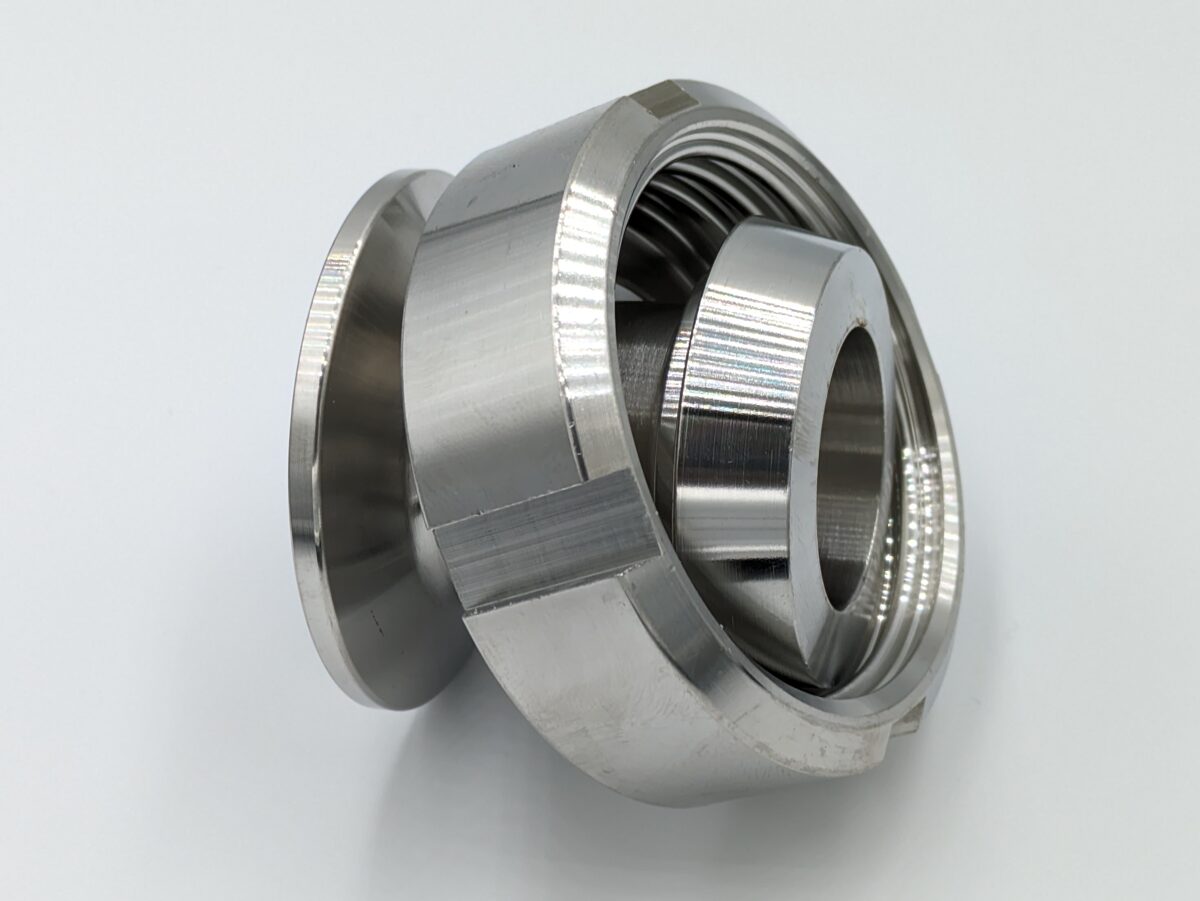Understanding the Differences: DIN 18851 Fittings vs. Tri-Clamp Fittings

Sanitary fittings are an essential component in industries where hygiene and cleanliness are critical, particularly in food, beverage, pharmaceutical, and biotech applications. Two widely used types of sanitary fittings are DIN 18851 and tri-clamp fittings. While they share similarities in function, there are crucial distinctions to understand when choosing the right fittings for your system.
What are DIN 18851 Fittings?
- Originate from the German Institute for Standardization (DIN) standards.
- Primarily used in European countries.
- Designed for metric measurements (millimeters).
- Measured based on the inside diameter (ID) of the tube.
What are Tri-Clamp Fittings?
- Also known as Tri-Clover fittings, named after the original manufacturer.
- Predominantly used in North America.
- Designed for imperial measurements (inches).
- Measured based on the outside diameter (OD) of the tube.
Key Differences
Let's break down the main differences between DIN 18851 and tri-clamp fittings:
- Measurement Systems: The core distinction lies in how they're measured. DIN fittings use the metric system, while tri-clamp fittings use the imperial system.
- Sizing: Due to different measurement standards, even similarly labeled sizes (e.g., DIN 50 and 2-inch tri-clamp) won't be a perfect match in terms of diameter.
- Sealing Mechanism:
- DIN 18851 often incorporates a gasket and a male and female connection that secures tightly using a nut and liner.
- Tri-clamp fittings use a gasket compressed between two ferrules, held together by a clamp.
- Interchangeability: In smaller sizes, tri-clamp and DIN fittings might be interchangeable, but it's important to verify exact dimensions to ensure a proper seal.
Which One Should You Choose?
The best choice often depends on these factors:
- Regional Standards: Consider the prevalent fitting standards in your location. This ensures easier compatibility and parts availability.
- System Specifications: If you're integrating into an existing system, verify the existing fitting type to maintain consistency.
- Specific Requirements: Consider pressure ratings, temperature tolerances, and any special material needs for your application.
In Conclusion
Both DIN 18851 and tri-clamp fittings provide reliable and hygienic connections in sanitary environments. Understanding the differences in measurement, sizing, and sealing mechanisms is crucial for selecting the most suitable fittings for your process needs.
No comments
Leave a reply
Cart
Cart is empty.